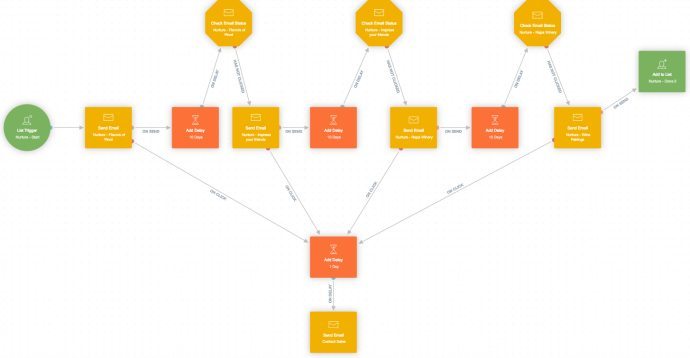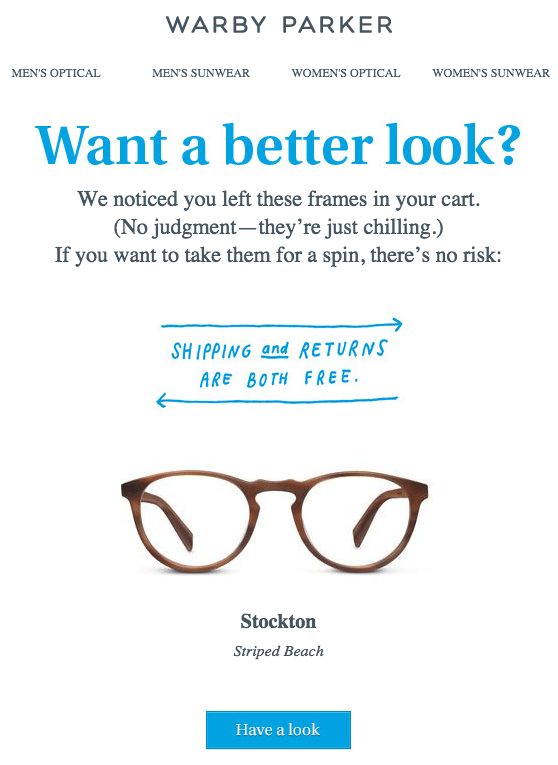June 27, 2016
What is a Drip Campaign? Definition, Data, and Misconceptions
Here’s a detailed breakdown of what drip campaigns are, why they work, and how you can implement them in your business, along with a few common misconceptions along the way.
What is a Drip Campaign?
Marketers agree on the general concept of a drip campaign, but use varying definitions to describe it. For example, Joe Stych from Zapier defines drip campaigns as:
_“[…] a set of marketing emails that will be sent out automatically on a schedule.”_
Neil Patel refers to them as:
_“[…] a series of triggered marketing emails to potential customers.”_
And finally, Sujan Patel explains the concept of drip campaigns this way:
_“A drip campaign is simply a series of automated emails that are sent to targeted users, ultimately designed to sell the recipient on something.”_
While all of these definitions are solid on their own, I’ve combined the best characteristics of each into one:
_A drip campaign is a triggered sequence of emails sent on a pre-defined schedule to targeted recipients or email subscribers to achieve a specific result._
Let’s break down this definition piece by piece. A triggered sequence of emails/series of automated emails. A drip campaign consists of a number of messages sent in a pre-defined order, always starting from the first message, and every time a new person enters the triggered email sequence. Although certain types of drip campaigns allow for some flexibility in the sequence order, in general, drip campaigns follow a set schedule. Sent to targeted recipients or email subscribers. Every person who joins your drip campaign will typically receive the same set of messages as anyone else on the list. But depending on their profile data or engagement, they could be taken down different paths in the drip campaign and sent more personalized and relevant content. Unlike traditional email newsletters, that you only start to receive from the moment you join a person’s list, drip campaigns always start from the beginning for everyone who signs up for them. Achieving a specific result/selling the recipient on something. A drip campaign can help you achieve many objectives. Most commonly, companies use them to nurture leads and push people further into their sales funnel. However, you could also use a drip campaign to onboard new clients or users, keep in touch with sales leads, re-engage dormant customers, welcome new followers, and much more.
What is so effective about drip campaigns?
Drip campaigns increase brand recall, keep prospects engaged, and build trust. **Brand recall. **Sending regular emails via drip campaigns, packed with value, helps prospects recall your brand amidst the noise. You’ll never be out of sight, out of mind. Increased engagement. Drip campaigns maintain a high level of engagement between a prospect and your brand. This is particularly important since, according to Gleanster Research, half of your leads are not ready to buy or even talk to sales when they first connect with you. A drip campaign, which typically has 3x the clickthrough rate of individual email sends, helps you engage them until they are ready to do so. Trust. Most prospects need more than one interaction with a brand before they’re willing to take action. People want to discover…
If you know what you’re talking about by engaging with your content
If others have had success with your products and services by reading your customer stories or online reviews
If you have the resources to provide the results they want
If what you offer is a good fit for them before they are ready to buy
Drip nurture campaigns help build trust over time and position your solution as the top choice when it’s time to move forward. To top it off, MarketingSherpa even found that companies who engage in lead nurturing strategies (that drip campaigns form a part of), typically achieve a 45% higher ROI.
What kinds of drip campaigns can you create?
Here’s a very high-level overview of the kinds of drip campaigns (or customer journeys, in Autopilot lingo) that you can create, organized by their corresponding goal: Nurture leads. The most common use of drip campaigns is to make leads sales-ready. Businesses usually achieve this through email courses and other educational materials that provide value and help leads overcome certain aspects of their problem, while making the case for choosing the company.  This is a basic four email nurture drip campaign (or journey) that sends short emails with a link to popular content like blog posts, ebooks, videos, or webinars. If a user engages by clicking any of your emails, then a personalized outreach is sent from your sales team. The campaign ends by adding these contacts to a list, indicating they have completed this first nurture journey. Welcome new clients or users. Once someone becomes a client or signs up for your product, a drip campaign can help you properly onboard them, introduce the company, explain how you work, and increase the chances of having a great client-vendor relationship. Here’s an example flow:
This is a basic four email nurture drip campaign (or journey) that sends short emails with a link to popular content like blog posts, ebooks, videos, or webinars. If a user engages by clicking any of your emails, then a personalized outreach is sent from your sales team. The campaign ends by adding these contacts to a list, indicating they have completed this first nurture journey. Welcome new clients or users. Once someone becomes a client or signs up for your product, a drip campaign can help you properly onboard them, introduce the company, explain how you work, and increase the chances of having a great client-vendor relationship. Here’s an example flow:
_Email 1: _Welcome the user to your product and set the tone for the relationship. _Email 2: _Show users that you understand their problems and communicate how you can help solve them. _Email 3: _Highlight specific features and introduce options features the user may have missed. _Email 4: _Try to convert the trial user into a paying customer. _Email 5: _Re-engage lost trialists with a discount offer or to extend their trial.
Rescue abandoned shopping carts. According to various data, between 65%-75% of shoppers abandon their online carts before completing a purchase. A drip campaign could help you re-engage these customers and lead them to complete the purchase. Here’s an abandoned shopping cart email example from Warby Parker:  The copy highlights that the shopper left the frames behind without buying. “We noticed you left these frames in your cart. (No judgment – they’re just chilling.)” This email could also be followed up with a discount offer, or another email showing similar products. Re-engaging dormant customers. Companies often use drip campaigns to entice former customers to return and start buying from them again. A re-engagement drip campaign is a way to draw people back in with valuable content and by re-evaluating their interest, as opposed to those one-off “we’ve updated our features” emails companies send after being radio silent for six months.
The copy highlights that the shopper left the frames behind without buying. “We noticed you left these frames in your cart. (No judgment – they’re just chilling.)” This email could also be followed up with a discount offer, or another email showing similar products. Re-engaging dormant customers. Companies often use drip campaigns to entice former customers to return and start buying from them again. A re-engagement drip campaign is a way to draw people back in with valuable content and by re-evaluating their interest, as opposed to those one-off “we’ve updated our features” emails companies send after being radio silent for six months.
What are common drip campaign misconceptions?
Lastly, let’s talk about a couple of things brands often get wrong regarding drip campaigns. “Drip campaigns are a set and forget marketing tactic”. Drip campaigns require more of a set it and and optimize it approach. Launching them takes upfront work, then they’re automated, but from there you continue to optimize based on results to improve your campaign’s performance. You can swap out content, change the order of your sequence, or add and remove emails entirely. Like most marketing tactics, there’s not a silver bullet. You have to test your way to what works. “Running drip campaigns is expensive”. Most drip campaign software costs anywhere from a couple to a couple hundred dollars per month, depending on your list size. Most options won’t break the bank. “Automating emails takes the personality out of my emails”. This all depends on how you write the emails. With good copy writing tips, a drip campaign sequence will make every recipient feel like you sent those emails individually to them.
What’s next
Drip campaigns are a smart way to engage your audience. Using the power of automation, you can set up flows for common use cases like following up with new leads, onboarding free trialists, and rescuing abandoned shopping carts. The possibilities are endless. In future posts, we’ll explore how to make the most out of your drip campaigns by covering best practices, actionable tips, and real-life examples you can adapt to your own business.












